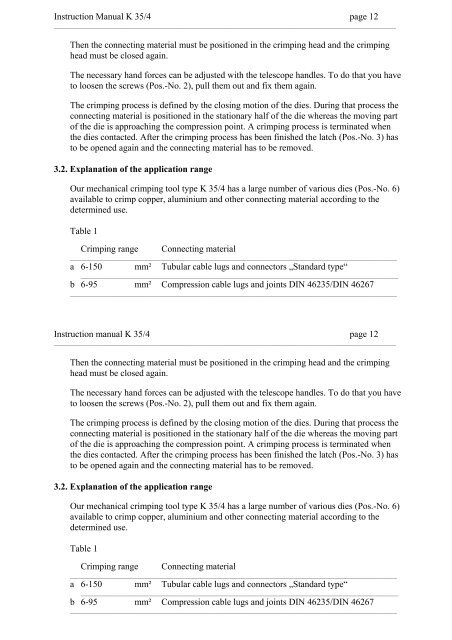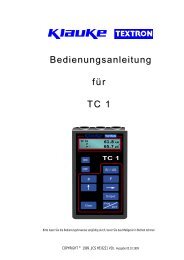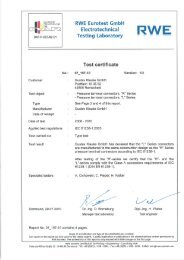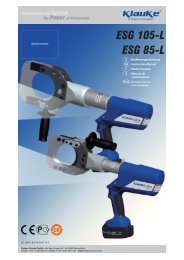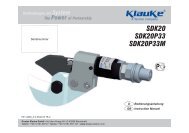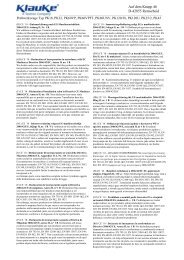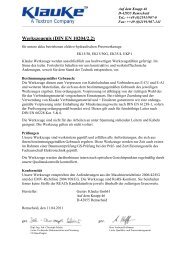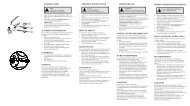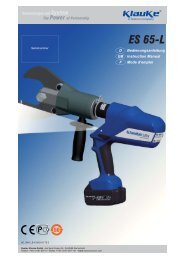Bedienungsanleitungen
Bedienungsanleitungen
Bedienungsanleitungen
Erfolgreiche ePaper selbst erstellen
Machen Sie aus Ihren PDF Publikationen ein blätterbares Flipbook mit unserer einzigartigen Google optimierten e-Paper Software.
Instruction Manual K 35/4 page 12<br />
________________________________________________________________________________________________________________<br />
Then the connecting material must be positioned in the crimping head and the crimping<br />
head must be closed again.<br />
The necessary hand forces can be adjusted with the telescope handles. To do that you have<br />
to loosen the screws (Pos.-No. 2), pull them out and fix them again.<br />
The crimping process is defined by the closing motion of the dies. During that process the<br />
connecting material is positioned in the stationary half of the die whereas the moving part<br />
of the die is approaching the compression point. A crimping process is terminated when<br />
the dies contacted. After the crimping process has been finished the latch (Pos.-No. 3) has<br />
to be opened again and the connecting material has to be removed.<br />
3.2. Explanation of the application range<br />
Our mechanical crimping tool type K 35/4 has a large number of various dies (Pos.-No. 6)<br />
available to crimp copper, aluminium and other connecting material according to the<br />
determined use.<br />
Table 1<br />
Crimping range Connecting material<br />
___________________________________________________________________________________________________________<br />
a 6-150 mm² Tubular cable lugs and connectors „Standard type“<br />
________________________________________________________________________________________________________<br />
b 6-95 mm² Compression cable lugs and joints DIN 46235/DIN 46267<br />
___________________________________________________________________________________________________________<br />
Instruction manual K 35/4 page 12<br />
________________________________________________________________________________________________________________<br />
Then the connecting material must be positioned in the crimping head and the crimping<br />
head must be closed again.<br />
The necessary hand forces can be adjusted with the telescope handles. To do that you have<br />
to loosen the screws (Pos.-No. 2), pull them out and fix them again.<br />
The crimping process is defined by the closing motion of the dies. During that process the<br />
connecting material is positioned in the stationary half of the die whereas the moving part<br />
of the die is approaching the compression point. A crimping process is terminated when<br />
the dies contacted. After the crimping process has been finished the latch (Pos.-No. 3) has<br />
to be opened again and the connecting material has to be removed.<br />
3.2. Explanation of the application range<br />
Our mechanical crimping tool type K 35/4 has a large number of various dies (Pos.-No. 6)<br />
available to crimp copper, aluminium and other connecting material according to the<br />
determined use.<br />
Table 1<br />
Crimping range Connecting material<br />
___________________________________________________________________________________________________________<br />
a 6-150 mm² Tubular cable lugs and connectors „Standard type“<br />
________________________________________________________________________________________________________<br />
b 6-95 mm² Compression cable lugs and joints DIN 46235/DIN 46267<br />
___________________________________________________________________________________________________________


